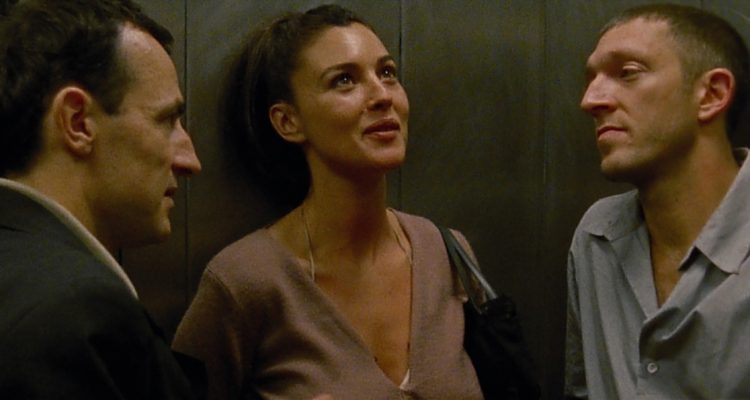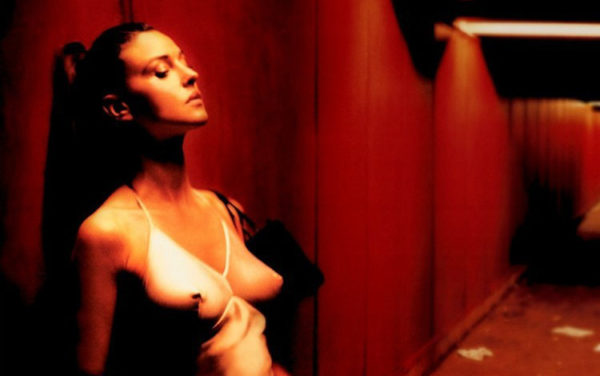Like Pauline Kael, I don’t usually watch a film twice; regardless if I want to relive the pleasure or believe my opinion will change. This is basically a time-wise economic preference; because my watchlist keeps growing longer and longer to unmanageable counts. I try to cross them off my list one by one where a few new films are added every week. So, I usually need a very good reason to see the same film more than once.
The reason I saw Irreversible twice, well, one and a half time to be precise, is that I couldn’t finish it the first time. I hate walking out of the theatre for any reason out of respect to the piece; but with Irreversible I remember acknowledging this was a powerful film that has made me shiver in all my cells, but I was just mentally not ready to experience it. I promised myself to give it another try in a couple of years.
During this time, I took six more Film Studies classes and made myself familiar with the technical and artistic aspect of cinema. As I learned more about the traditions, I appreciated the directors who break the usual norms and make us leave the theatre stunned. I started to love it when I have to go to the bathroom after watching a movie to wash up and shaken up to feel myself again. I figured there is something amazing with the movies which succeed in disturbing me.

I could say that my range of appreciation of film aesthetics expanded to include the aesthetics of destruction and violence. I started to enjoy the irony in watching a movie in which certain scenes are too unbearable for me that I have to close my eyes with my hands and peep through my fingers. And yet Irreversible is not pure horror; as Noé notes: “Let’s make it shocking when it has to be shocking and sweet when it should be sweet.”
American film critic Phillip Lopate claims that the particular stage in life affects your taste in cinema. My first encounter with Irreversible corresponds to a period in my life when Wes Anderson was my favorite director. I used to enjoy watching solely visually pleasing, amusing films that feels like strawberry tartlet, where in this metaphor Irreversible would be Mexican chilli? Stay away if you don’t want fires burning up. So with expanding knowledge, my taste also changed. I learned to find enjoyment in all sorts of movies and not only in the cute mellow indies.
The first time seeing Irreversible, I remember finding it very confusing that the film is in reversed chronological order. Thus breaking the classical narrative structure, it allows the spectator to experience the unfolding events before getting to know the characters and their reasonings. Noé admits that while watching a film, he wouldn’t have a desire to see what happens after someone is raped. Therefore the reversed order enables him to put the disturbing images before the nice ones so that the spectator knows that it can only get better from here. However, even though the images seem nicer, as we get to know the personalities of the characters, their lives, and desires, the previous (or following) events become more and more tragic up until the last scene.

The eight-minute long take of the rape scene was for sure the most controversial one which made a lot of people walk out of the theatre. We can’t bear watching it for eight minutes but all around the world millions of women and men live through it. They can’t simply walk out. It is an unforgettably horrific scene that suggests loss of innocence and irreversible scarring of purity, as the worst happens to an angelic beauty. Noé notes that the scene is more about male dominance and the desire for destruction. Either way, this scene induces my appreciation towards powerful display of violence on screen. It depicts an obnoxious part of life which we are not used to seeing on screen, but doesn’t make it any less real.
Everything feels so real in Irreversible that it hurts. What elevates the striking effect of this film is the use of handheld camera and the long takes, and I didn’t realize it the first time simply because it made me dizzy. After seeing Enter the Void, and how the director makes use of the camera as if another character, I started appreciating these volatile camera movements. Without cuts, we get a full sense of the spatiality and enjoy alterations of lighting and setting within the same scene in the different rooms of the party house. Noé seems to be against the idea of camera as a fly on the wall. He knows that the camera becomes the spectator’s eyes; and that usually we don’t stare fixated at the same angle. The handheld camera allows the viewer to be grasped in the action; which in this case it is like a monster’s hand clenching from under your bed. You can’t escape, you will witness all, you are a part of the violence.
I find it surprising that in non of my classes we are taught to appreciate the “disturbing” cinema. We usually focus on mise-en-scène or narrative; and pay less attention to the controversial films which break the classical traditional structures and induce detest or distress as the main emotion. After purely personal realizations, I learned to appreciate Gaspar Noé’s ground breaking cinema and am content to be introduced to a new taste. Now, Climax is one of my favorite films and I felt offended when a classmate from the Cinema Studies program told me Noé was his least favorite director.
